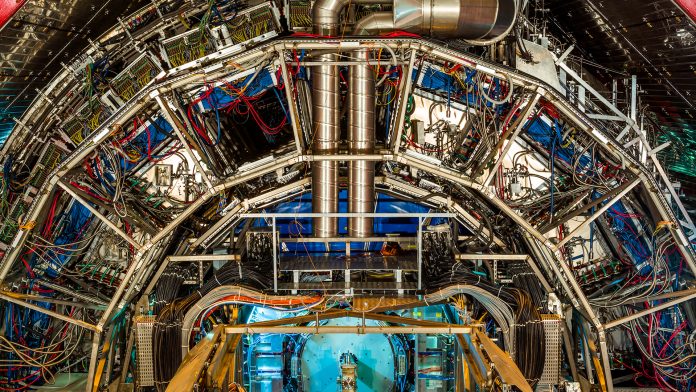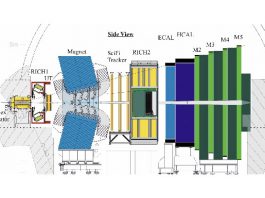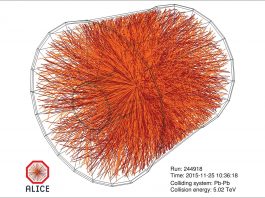SLAC’s Dr JoAnne Hewett spoke to The Innovation Network’s Clifford Holt about some of the many physics activities the national laboratory is involved in.
AS one of 17 Department of Energy national labs, the SLAC National Accelerator Laboratory pushes the frontiers of human knowledge and drives discoveries that benefit humankind. From solving energy challenges to exploring the Universe at the largest and smallest scales, SLAC’s research helps solve real-world problems and advances the interests of the USA, while opening new windows to the natural world and building a brighter future through scientific discovery.
Working at the forefront of modern particle physics, SLAC scientists use powerful particle accelerators to create and study nature’s fundamental building blocks and forces, build sensitive detectors to search for new particles and develop theories that explain and guide experiments. Meanwhile, to explore the birth of the Universe, the formation of stars and galaxies, and the fundamental structure of space and time, SLAC researchers develop cutting-edge technologies for sensitive experiments located deep underground, on the surface, and in space. The laboratory is also involved in many other areas, too.
The Innovation Network’s International Editor, Clifford Holt, spoke to Dr JoAnne Hewett, a world-class theoretical physicist and Chief Research Officer at SLAC, about some of the physics-related activities that SLAC is involved in – from experiments at CERN, to the Vera C Rubin Observatory, to neutrino experiments and the search for dark matter.
Could you give me an overview of the activities that take place at SLAC? How challenging is it to combine such variety? How does your lab fit into the wider environment of Department of Energy national labs?
SLAC is a relatively small lab, as far as national labs go. We have roughly 1,700 staff members, in comparison to many of the other national labs, which have up to 10,000 employees.
That being said, we pursue a very broad variety of science, from biology to chemistry to fundamental physics, which my directorate does, to more applied physics, energy research, and so on. For my part, I am SLAC’s Chief Research Officer and I am also the Associate Lab Director for Fundamental Physics, which is where my own scientific background lies.
SLAC was born as a single-purpose lab for high energy physics. Our two-mile-long linear accelerator was built to search for new particles and new interactions, and it did very well; we discovered three fundamental particles over the years. Nonetheless, high energy physics marches on with accelerators reaching increasingly higher energies, and the lab transitioned so that its major focus came to rest on photon science, with the accelerator coming to be used as an X-ray free electron laser. SLAC’s machine is one of only a few XFELs in the world.
Yet, that did not mean that SLAC was left behind in terms of particle physics. Indeed, we are stronger now than we were in the past in terms of particle physics because instead of having just one programme in high energy physics that was focused around whatever the accelerator was doing at the time, we are now involved in the entire spectrum of activities.
We have a group involved in ATLAS at CERN’s LHC, for instance. ATLAS has 3,000 international collaborators, with each group working on a different aspect of the experiment. SLAC is responsible for the ‘national lab scale’ activities, which is a significant element of the construction of the detector that cannot be achieved in a generic university physics department laboratory and requires the facilities and capabilities of a national lab. We are responsible for assembling the stave – which is essentially a large barrel that is part of the inner tracker, the innermost part of the detector.
Physics-wise, in the ATLAS group we focus on analyses that makes use of the detector component we have built. This is important because those who have built a detector component are the ones who know that component better than anybody else; they know its response time and its systematics, for example. We can take advantage of that in the scientific analyses.
The inner tracker measures heavier particles, such as bottom and top quarks, and we use those measurements for things like Higgs boson physics, where the Higgs decays via various different channels but eventually into bottom and top quarks. We do this both for searches for new Higgs bosons and in terms of measuring the properties of the Standard Model Higgs.
SLAC joined ATLAS quite late because we were conducting our own on-site experiment until 2008, meaning that we didn’t join ATLAS until 2006. Indeed, ATLAS was the first external experiment that SLAC joined, so it is significant in that respect, too. Many on the SLAC team who had been involved in the accelerator-based experiment that we had been running here are now members of our ATLAS group, and they are building on their collider physics expertise.
When it comes to elementary particle physics, where does SLAC excel? What experiments etc. are you most excited about?
Alongside our activities at ATLAS, we have also recently joined the neutrino physics programme at Fermilab. We have been involved in the design phase of the time projection chamber for the experiment’s near detector from the beginning. Amongst the large contingent that we have here, some of our team are directing the design for the near detector.
We are also involved in a neutrino-less double beta decay experiment. We pioneered the use of a large tank of liquid xenon as the technique for this search in an experiment called EXO-200, the Enriched Xenon Observatory, and we are now involved in the next generation experiment, called nEXO (next EXO). That has not yet been built but is planned to be operated in Sudbury at SNOLAB.
Our largest programme is actually in the cosmic frontier. When we stopped doing experiments on-site at SLAC, we took a lot of our expertise in building particle physics detectors for accelerators and now use it to explore dark matter and dark energy in the Universe.
We are the lead Department of Energy laboratory for the Vera C Rubin Observatory, formerly known as the Large Synoptic Survey Telescope, which is currently under construction in Chile and which will conduct a 10-year Legacy Survey of Space and Time of the entire southern sky and provide the widest, fastest and deepest views of the night sky ever observed. It will survey 10 billion galaxies, which equates to some 20% of the Universe, looking all the way back to the beginning of Universal Time.
That is incredibly exciting and is SLAC’s flagship activity in fundamental physics. We’re building the 3.2 gigapixel prime focus digital camera that will take a 15-second exposure every 20 seconds, and it is here that we really utilised our particle physics expertise in silicon and tracking, which we had previously employed at the BaBaR detector, to build a camera designed to take pictures of the Universe.
In the search for dark matter, we are the lead laboratory for the Cryogenic Dark Matter Search (SuperCDMS) which is going to be operated at SNOLAB. This will search for lower mass dark matter, down to the GeV (and slightly lower than the GeV) range. Meanwhile, we are also members of the LZ collaboration. The detector for this experiment has recently been completed and, when operational, it will go on to search for dark matter in the 10 GeV to 1 TeV range.
We are thus involved in numerous different activities, and so effective management is key; we have to keep our eyes on the ball and make sure that each of our activities is progressing in the way that it should.
A programme I am particularly excited about is one that we very recently received funding for, and which we are going to start building soon. This is exciting because we are going to utilise the electron beam of our X-ray free electron laser, the Linac Coherent Light Source (LCLS), after it has already been used to create photons. This beam would have simply gone to the beam dump, but we are going to bring it to one of our collider halls in End Station A where we previously discovered quarks in 1968. There, we will build a new fixed target detector to look for dark matter in the MeV to GeV range. This will be the only facility in the world that can do this.
I have been working on gathering the funding for this for the last four years, so it is great to have finally been successful and to be using the accelerator at SLAC for particle physics experiments once more. And it is truly exciting to be looking for dark matter in a mass range that no one has ever investigated before; we will explore completely new territory in the search for dark matter. Given that it is in the same mass range where we find electrons, protons, and quarks – all of the stable particles in the Standard Model – we are hopeful that we will discover new dark matter candidates. We hope to start operations in 2025-2026.
This new experiment is perhaps the opposite of our activities with the Rubin observatory, which is large scale and extremely expensive; here, we will be both looking at the smallest scales and will also be making use of an existing facility – which in itself costs roughly a billion dollars and was created by another part of the DOE, the basic energy science arm of the Department of Energy Office of Science – recycling the beams, in a sense, by stripping off the electrons rather than just throwing them away, and using them for particle physics experiments.
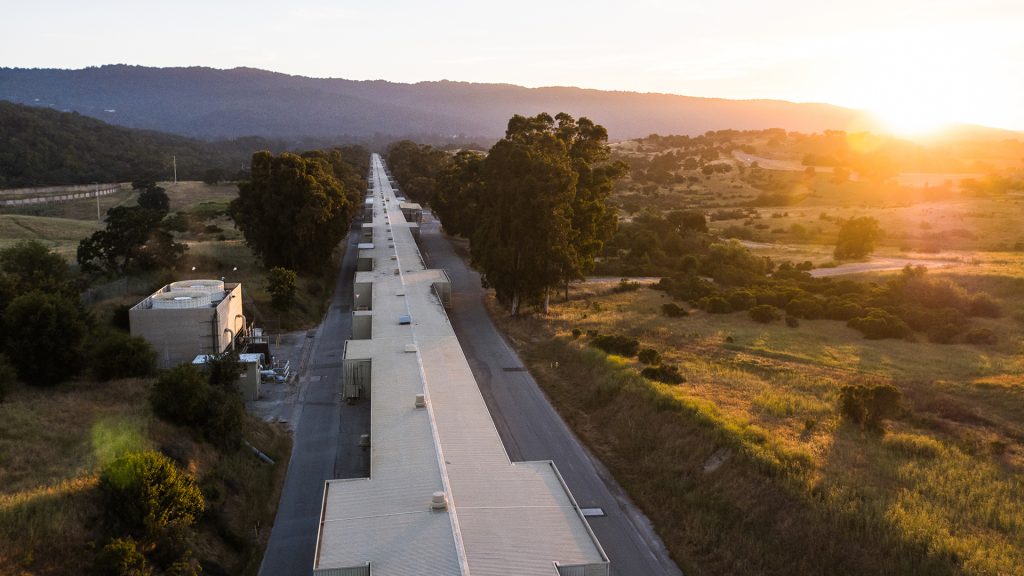
Your bio states that you ‘enjoy devising experimental tests for preposterous theoretical ideas’. Where are your own research priorities pointing at the moment?
I am a theoretical physicist by training, but as a manager at SLAC I have little time now for my own calculations (although I do plan to return to practicing theory at some point). Before I moved into management, I did enjoy taking crazy theories and thinking about what signatures they would have in an experiment. That was mainly concerning collider physics, so typically what takes place at the LHC.
My last paper developed a rather radical theory about statistical mechanics that changes the evolution of the Universe and thus also changes some dark matter properties – in particular, the dark matter cross section that is needed for the freeze-out of dark matter in the early Universe. This would ultimately change how dark matter is searched for. That was a lot of fun.
How does SLAC complement other accelerators etc. around the world (such as CERN)?
I believe that it is very important to have a diverse set of programmes that are of a large enough scale that they can make major contributions, such as the Rubin observatory, the neutrino programme at Fermilab and, of course, the LHC at CERN. But it’s also important to ensure variety in scientific thought beyond that. Because we have this variety, we are able to do smaller, yet impactful, programs like the dark matter experiment at SLAC that we are now starting to build.
It is also crucial that we have variety in terms of core expertise and skills. That is why it is so important to have an entire ecosystem of programmes in high energy physics; SNOLAB, for example, is focused on underground physics; Fermilab is focused on neutrino physics; CERN is focused on the Large Hadron Collider; and SLAC’s main focus (alongside our ATLAS and neutrino programmes, which are all very exciting) is on the cosmic frontier.
During your tenure as EPP Division director you established a neutrino theory programme and also extended SLAC’s experimental efforts in accelerator-based neutrino physics and neutrino-less double-beta decay. What were your biggest achievements here? What do you hope the future will hold for this programme and the work taking place there?
Our neutrino theory programme is a very important piece of the theory group. Indeed, the theory group at SLAC has been traditionally very strong; it is a hallmark of the laboratory and has always been one of the top theory groups in the world.
As such, I felt that it was important to become active in neutrino theory, as this is an area that has been ignored somewhat, both generally around the world and in the USA particularly. Now, however, the $2-3bn accelerator-based international DUNE programme – the Department of Energy’s only international facility – is the US’s flagship programme in particle physics.
Theory and experiment go hand-in-hand; you can’t have one without the other. You have to be able to predict what you are going to see in your experiment and to interpret your results. Once you have been able to take the data, you need something to compare it to.
My belief at the time was that we were not devoting enough time to neutrino theory in the United States. I therefore hired a senior theorist and world expert on supernova neutrino physics. That complemented our cosmic frontier focus very well, and since he started working at SLAC he has developed a great group who are now looking at neutrino cross sections, an area with currently a lot of theoretical uncertainty and which includes a lot of nuclear and low energy physics. It involves a lot of modelling, and he has taken a hard look at this and found some serious gaps.
The new dark matter experiment we are building with the LCLS beam can also measure neutrino-nucleon cross sections because we are essentially looking for the missing energy in the final state, and that missing energy is in the form of either neutrinos or dark matter. It is possible to measure the electron-nucleon converted to neutrino cross sections, and our theory effort devised that programme for the new detector, which is also very exciting and is further evidence of the unique contribution that SLAC can make to the field.
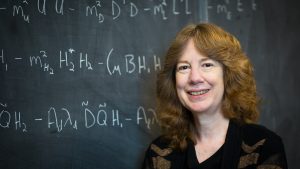
Dr JoAnne Hewett
Chief Research Officer
SLAC
hewett@slac.stanford.edu
Tweet @SLAClab
www6.slac.stanford.edu
Please note, this article also appears in the fifth edition of our quarterly publication.

